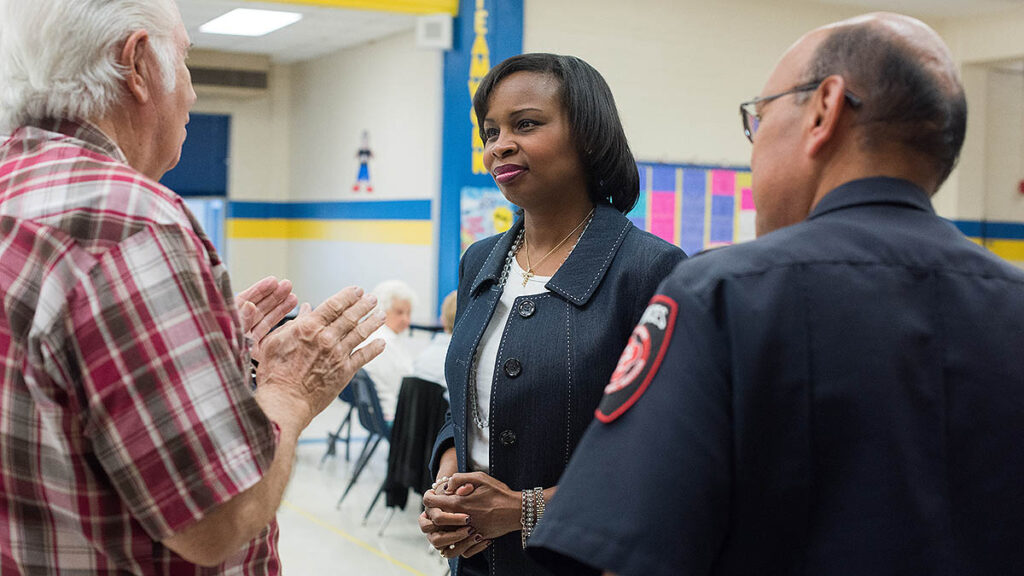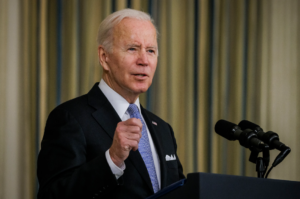Ivy Taylor: ‘I believe we can create safe, stable mixed-income neighborhoods throughout the city’
5 min read
Before she entered politics, Mayor Ivy Taylor spent five years at the City of San Antonio’s housing and community development department and six years working at Merced Housing Texas, a statewide nonprofit based in San Antonio that builds affordable housing and offers home repair assistance.
“I’m a community development planner at heart, not really a politician per se — so I started my work and career here in San Antonio focused on affordable housing,” Taylor said.
Taylor says this is one of the reasons she ran for the District 2 City Council seat in 2009. She found her impact at the city and Merced was only going so far.
Taylor won the District 2 council seat in 2009, and in 2014 the Council voted in Taylor as mayor when Mayor Julián Castro resigned to become secretary of the U.S. Department of Housing and Urban Development under President Obama.
Planning for tomorrow
She says in her role as mayor, she’s continued to work on projects that can “level the playing field.” Taylor cites the SA Tomorrow plan, which introduces the concept of regional centers — areas of town where people live close to where they work, socialize and play. A key component of the concept would be mixed-income housing.
“I believe we can create safe stable mixed-income neighborhoods throughout the city, not just in some parts of the city,” Taylor said.
A few weeks ago, San Antonio voters passed its first housing bond — $20 million that will be used to prepare sites for developers to build affordable housing.
San Antonio’s distressed housing stock
The mayor is also concerned with the decay of current housing stock. Specifically, she wants to see what the city can do to help expedite the rehab of homes that have remained vacant and that decay further because of red tape.
“There’s a lot of housing stock in the inner city that can provide options for lower income families, but these houses sit vacant, dilapidated and no one has the wherewithal to figure out how to get them out of that state.
Taylor explains that owners of these properties face several obstacles in trying to take on decaying homes themselves.
“If you’re a low income buyer and go to the bank, first of all, you may not be able to get a loan on the property because it’s in such bad condition. Or the bank might tell you, ‘We’ll give you the loan, but then you have to invest your own money into the repairs.’ Well, you probably don’t have that money. There are programs that allow you to take out the mortgage and repair costs, but there’s so much red tape that people get turned off. People get ripped off by contractors. Contractors get frustrated with rules and regulations. I just really feel that there’s a lot of opportunity to figure out how to streamline the system to get a lot of the existing housing stock, especially inside Loop 410, back into use.”
Private developers and existing communities?
Another challenge: how encourage the private-sector to build new housing in long-neglected parts of town, and at the same time protect longtime residents.
The best recent example is Mission Trails, where a rezoning by the City Council resulted in the displacement of hundreds of families of a trailer park home on the riverside property near Mission Concepcion. Taylor supported the rezoning because the South Side — along with other neglected areas of San Antonio — was in need of newer housing stock, she said.
“There is no way that I would never have been opposed to that, especially when in that case provisions were provided, and may not have been what everyone thought should have been provided, but the developer did provide provisions for the people who were being displaced and was not obligated to do so.”
So, then, how can the city protect those longtime residents? Currently, the Housing Commission to Protect and Preserve Dynamic Neighborhoods, which Taylor created, is looking into crafting a policy to address displacement.
Meanwhile, Taylor has her own ideas.
“We can look more closely with data related to tax freezes that we already have in historic districts,” she said. “Data is important here, because people get emotional and fearful about the G word (gentrification) and about displacement without really looking at what the numbers are.”
The last analysis Taylor saw showed that low income renters are the most vulnerable. They get pushed out when the property owners see that they can rehab the homes and therefore charge a higher rent.
Low income homeowners are more likely to have some protections already in place — for example, if they are 65 and older, or if they live in an historic district. But she also believes the city could educate longtime homeowners in changing communities of what their options are — instead of just selling to those people who want to move into the community.
“We say people are being forced out, but they’re selling their properties. I think we can provide more financial counseling on what their options are related to their tax liability — what the future might look like for them.”
Education and workforce training
She also views workforce development as a major swing of the bat at entrenched poverty.
“I think for a long time, we’ve just been focussing on education, which is obviously the great equalizer,” she said. “But I think when you say education, that gets people focussed on K through 16, and we have a whole lot of people in San Antonio that are not in that space. And we have to figure out how to connect them to opportunities whether that be short term training, skills development, people learning trades, so that they can kind of step up the ladder of economic mobility.”
Calling on the faith community
Taylor, who regularly visits churches throughout the city, says the feedback she’s received from the faith-based community is that it’s excited to get more involved in trying to solve the issue of generational poverty.
“The message I’ve been trying to convey is that we need the faith community to teach people to fish not just give them a fish. So a lot of churches get involved in kind of serving basic needs, kind of emergency assistance and you know we’ll always need those safety net services,” she said. “But I think there’s an opportunity for them to delve in a little bit more.”
The article was published at Ivy Taylor: ‘I believe we can create safe, stable mixed-income neighborhoods throughout the city’.







